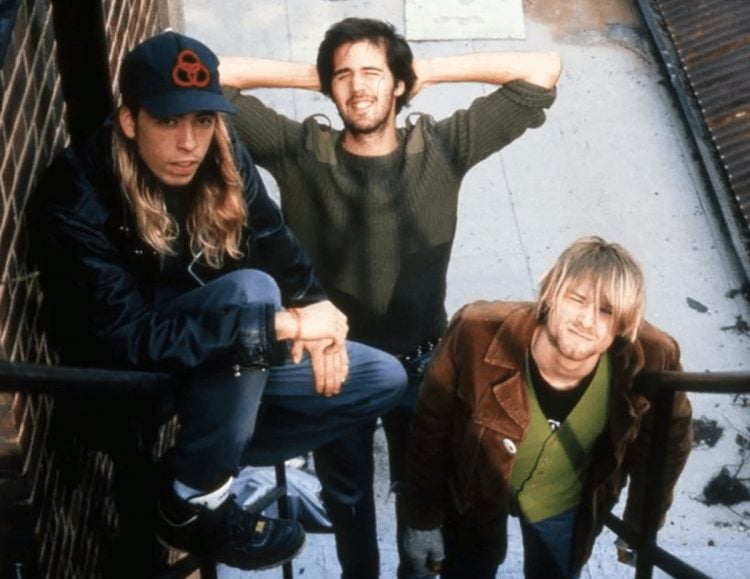Was this Nirvana song Kurt Cobain’s ode to heroin?
The beginning of the 1990s marked a turning point for Washington-based grunge band Nirvana. After replacing drummer Chad Channing with Dave Grohl, breaking their record contract with Sup Pop to sign with the major label DGC Records, and finding unexpected mainstream success with ‘Smells Like Teen Spirit,’ the first single off of their sophomore album Nevermind, they were looking to keep their momentum going.
‘Come As You Are’ was introduced as a possible contender for a second single off of the album, along with ‘In Bloom,’ but the band and management company were worried that it sounded too similar to the post-punk group Killing Joke’s 1985 song ‘Eighties.’ Danny Goldberg, head of Nirvana’s management company Gold Mountain, recalled: “Kurt [Cobain] was nervous about ‘Come as You Are’ because it was too similar to a Killing Joke song, but we all thought it was still the better song to go with.” Despite the potential controversy, and after Goldberg alleviated Cobain’s worry, the song was released on March 2, 1992, 29 years ago today.
The song showcased Nirvana’s signature style— the dynamic contrast of soft verses, in-your-face choruses and simplistic lyrics. “Kurt had a beautiful grasp of songwriting in its simplicity and depth,” said Dave Grohl in an interview with The Guardian. But this simplicity oftentimes lends itself to wild interpretation, especially when taking into account Cobain’s habitual heroin use at the time.
Some lyrics have become pop culture references, such as the line: “Take your time, hurry up, the choice is yours, don’t be late,” which was later referenced by blink-182’s ‘Adam’s Song.’ In it they sing, “I took my time, I hurried up, the choice was mine I didn’t think enough.” Another line, “Come doused in mud, soaked in bleach,” was supposedly taken from a phrase in a Seattle HIV campaign that said, “If doused in mud, soak in bleach.” This encouraged heroin users to soak their needles in bleach after injecting to prevent spreading the disease. But when looking at other lines such as “Load up on guns, bring your friends, it’s fun to lose and to pretend,” and seeing how Cobain would pass away by a self-inflicted gunshot wound just three years later, it could very well point to the escapism Cobain was seeking while indulging in the drug.
Cobain was allegedly introduced to heroin in the late 1980s, and his use slowly progressed as his relationship with musician Courtney Love developed and his undiagnosed chronic stomach condition worsened. The combination of all of these factors turned his occasional use into a full-fledged addiction, which he went to rehab for in 1992 with little success. There are certainly lines within the track that could work as inference to Cobain’s growing habit. “As a friend, as a trend, as a known enemy,” speaks loudly of the struggle most users face, first becoming enchanted by the power of the drug then confined to its demise. It’s one of many suggested references to heroin within the song.
Accompanying the single’s release in 1992 was a promotional video that featured the band performing the song a few days before embarking on their Australian tour. Cobain’s face is obscured for most of it, either by a stream of running water (to hint at the album’s cover and the “watery” sounding guitar riffs) or the psychedelic editing. Grohl recalls him looking unwell during the shoot, so it isn’t a surprise his sickly, greyish demeanour is unclear.
We do get a glimpse of clarity into Cobain’s songwriting process for the album in a 1991 Billboard interview where he said, “These [referring to the songs on Nevermind] are ideas I’ve had, different scenarios, different things, stuff from television, books, characters. Um, a lot of the lyrics were written just minutes before we recorded the vocals in the studio,” said Cobain. “I don’t like to take my things. I like to get them done, be spontaneous. It usually lends to a better creative force.”
So, whether the song was a subconscious ode to heroin or not, it has continued to inspire in unlikely ways over the years despite its dark undertones. In Aberdeen, Washington, Cobain’s hometown, they put up a road sign that reads, “Welcome To Aberdeen. Come As You Are.” It has also been incorporated into films such as Captain Marvel (2019) and Definitely, Maybe (2008).
Nirvana’s producer for the album Butch Vig told NPR: “I think that song [‘Come As You Are’] is about acceptance, and about misfits. You’re cool no matter how screwed up you are. ‘Come As You Are’ is an ode to accepting someone for who they are.” But the only insight Cobain ever gave regarding the lyrics to “Come As You Are” was that the song was, “About people, and what they’re expected to act like.”
The truth is, like most of his songs, Cobain’s lyrics are not centred around a perfect narrative, nor delivered with a linear storytelling bow. Instead, we are taken through a myriad of fragmented ideas and themes patched together to create one of Nirvana’s greatest singles. The reality is, that while this may not be an ode to heroin in the traditional sense, the very fact that the song reflects its creator, means the image of Cobain’s drug abuse is hard to remove from the frame.






